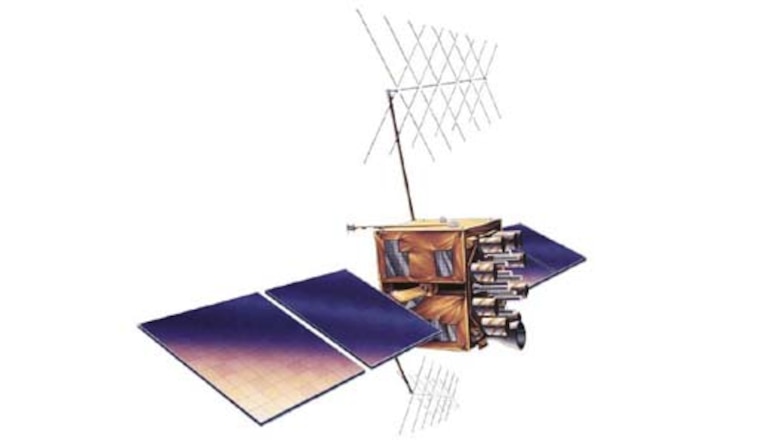https://www.afspc.af.mil/About-Us/Fact-Sheets/Display/Article/1012634/global-positioning-system/
Global Positioning System
The Global Positioning System is a constellation of orbiting satellites that provides navigation data to military and civilian users all over the world. The system is operated and controlled by the 50th Space Wing, located at Schriever Air Force Base, Colo.
Features
GPS satellites orbit the earth every 12 hours, emitting continuous navigation signals. With the proper equipment, users can receive these signals to calculate time, location and velocity. The signals are so accurate, time can be figured to within a millionth of a second, velocity within a fraction of a mile per hour and location to within 100 feet. Receivers have been developed for use in spacecraft, aircraft, ships and land vehicles, precision munitions, as well as for hand carrying.
GPS provides 24-hour navigation services including:
· Extremely accurate, three-dimensional location information (latitude, longitude and altitude), velocity (speed and direction) and precise time
· A worldwide common grid that is easily converted to any local grid
· Passive all-weather operations
· Continuous real-time information
· Support to an unlimited number of users and areas
· Support to civilian users at a slightly less accurate level than cryptographically keyed users
The GPS constellation is designed and operated as a 24-satellite system, consisting of six orbital planes, with a minimum of four satellites per plane.
The Evolved Expendable Launch vehicle is used to launch GPS satellites from Cape Canaveral Air Station, Fla., into nearly 11,000-mile circular orbits. While circling the earth, the systems transmit signals on two different L-band frequencies. Their design life is 10 years for Block IIR/M (but many are lasting longer), 12 years for Block IIF, and 15 years for Block III.
Background
The GPS Master Control Station, operated by the 50th Space Wing’s 2nd Space Operations Squadron (SOPS) at Schriever, is responsible for monitoring and controlling the GPS satellite constellation. The GPS-dedicated ground system consists of six USAF dedicated monitor stations and four dedicated ground antennas located around the world. The monitor stations use GPS receivers to passively track the navigation signals on all satellites. In 2007, GPS added 10 more shared monitor stations (part of the National Geospatial-Intelligence Agency — NGA network of monitor stations) increasing the overall accuracy of the system to all users. Information from the monitor stations is processed at the master control station and used to update the satellites’ navigation messages.
The master control station crew sends updated navigation information to GPS satellites through ground antennas using an S-band signal. The ground antennas are also used to transmit commands to satellites and to receive state-of-health data (telemetry).
The GPS Program Office is working to enhance many of the capabilities provided by the current satellites and user equipment. In April, 2014 the pre-operational broadcast of navigation messages began for additional civil signals (L2C and L5). Additionally, the next generation of GPS will provide increased signal accuracy and reliability, improved anti-jam capabilities, and a fully operational military code capability. Applications such as mapping, aerial refueling and rendezvous, geodetic surveys, and search and rescue operations will benefit from these enhancements.
GPS capabilities were put to the test during the United States’ involvement in Operations Desert Shield and Desert Storm. Allied troops relied heavily on GPS to navigate the featureless Arabian Desert. During operations Enduring Freedom, Noble Eagle and Iraqi Freedom, GPS contributions increased significantly. During OIF, the GPS satellite constellation allowed the delivery of 5,500 GPS-guided Joint Direct Attack Munitions with pinpoint precision (to about 10 feet) and with minimal collateral damage. This was almost one-fourth of the total 29,199 bombs and missiles coalition forces released against Iraqi targets. GPS continues to fill a crucial role in air, ground and sea operations guiding countless service members and equipment to ensure they are on time and on target.
Air Force Space Command’s Space and Missile Systems Center at Los Angeles AFB, Calif., acts as the executive agent for the Department of Defense lead for acquiring GPS satellites and user equipment.
General Characteristics
Primary Function: Positioning, navigation, timing and velocity information worldwide
Primary Contractors: Block II/IIA, Rockwell International (Boeing North American); Block IIR, Lockheed Martin; Block IIR-M, Lockheed Martin; Block IIF, Boeing North American; Block III vehicles 1-10, Lockheed Martin
Power Plant: Block IIR/M solar panels generate 1040 watts; Block IIF panels generate 2450 watts; panels on Block III vehicles 1-10 generate 4,480 watts
Weight: Block IIR/M, 4,480 pounds (2,217 kilograms); Block IIF, 3,758 pounds (1,705 kilograms); Block III vehicles 1-10, 5,003 pounds (2,269 kilograms)
Width: (includes wingspan) Block IIR/M, 449 inches (11.4 meters); Block IIF, approximately 116 feet (35.5 meters); Block III vehicles 1-10, 538 inches (13.7 meters)
Design life: Block IIR/M 7.5 years; Block IIF, 12 years; Block III, 15 years
Date of First Launch: 1978
Launch vehicle: EELV and independent commercial providers
Date Constellation Operational: April 1995 (at full operational capacity)
Navigation Information Service
The U.S. Coast Guard operates and maintains the Navigation Information Service for civilian GPS users. It can be reached at 703-313-5900, 24 hours a day, 365 days a year.
Point of Contact: Air Force Space Command, Public Affairs Office; 150 Vandenberg, Suite 1105; Peterson AFB, Colo. 80914-4500;
DSN 692-3731 or (719) 554-3731 (Current as of November 2016)

